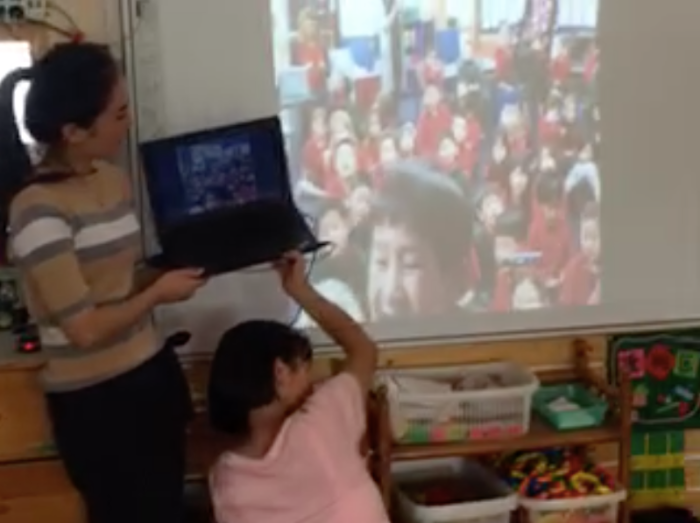 |
 |
Yesterday we had the most amazing experience with our children as part of our school wide focus on Chinese language and culture week. One of our parents set up a WeChat session with a kindergarten in Zhengzhou, Henan in China. She came, was part of the session and and helped to ensure that it was a success.We spent approximately 30 minutes with the children and teachers. The kindergarten is one her son attended before they came to New Zealand.
The experience was a little different to Skype in the classroom because our children are learning Mandarin. Therefore we did not do the usual ‘Guess where we are sessions.‘ I was really lucky to have a translator as this helped immensely with the experience.
The video quality was low from their end, but that is OK because I know that as educators we are problem solvers. They shared with us via WeChat what it looked like from their end and it was so exciting to see the faces of their children. The children were really excited as ours were too. They had hooked up a computer to a data projector and their teachers were balancing the computer and holding up the computer for our benefit so that we could see their children. The really exciting thing about using WeChat was that we did not fall off. I have had experiences using Skype with China where there is a lot of interruption but using WeChat seemed to eliminate this.
I used my iPhone to record or children and streamed this through apple TV so that they could see our children. My main technology was heaps of bluetac to connect the iPhone to the top of the television. Before the session Lili one of our parents and I had carried out a test run with our virtual guests. Then before the live session I flick on the video so that our children could see themselves on the television screen. This helped align our children for the camera in preparation for the session.
Our children practiced saying
| 大家好 | dà jiā hǎo | Hello everyone! |
| 您好 | ni hao | Greetings |
| 您好 | ni hao lǎoshī | Greetings teachers |
| 再见 | zài jiàn | Good bye |
We went live and both classes greeted each other.
Then they sang us a song. We sand them a song in Chinese. They sang us 5x little Ducks in Chinese, we sang them a Maori song. Next their teacher suggested we sing a song together that we both knew. This was twinkle twinkle little star, so cute. After that I had our teachers introduce themselves in Mandarin. Finally we all said goodbye and thank you.
The point of all this you may ask?
The authentic use of a language. The chance to share our learning in Mandarin even though it is really basic. The opportunity to make connections with children in another country who are the same age as our little ones. To show our teachers that there are new ways of learning. So rather than using photos or videos of another country, culture and language, we can be doing so much more.
Where to next?
The learning I learnt from taking part in Flat Connections student projects is the importance of co construction. I was really excited when their teachers suggested singing a song together. This is something I know about early childhood teachers, they always think outside the box. My imagination is all fired up with the possibilities. I have suggested that our teachers explore Wechat so will do another big push again with this tool.

The rest of this week is about celebrating the culture and language of one third of our student population as part of the National Chinese Language Week. We have so many activities and experiences organised. I give a massive shout out to the Asia New Zealand foundation who approved our application for support. The extra amount enables us to help make this week memorable for our children.




